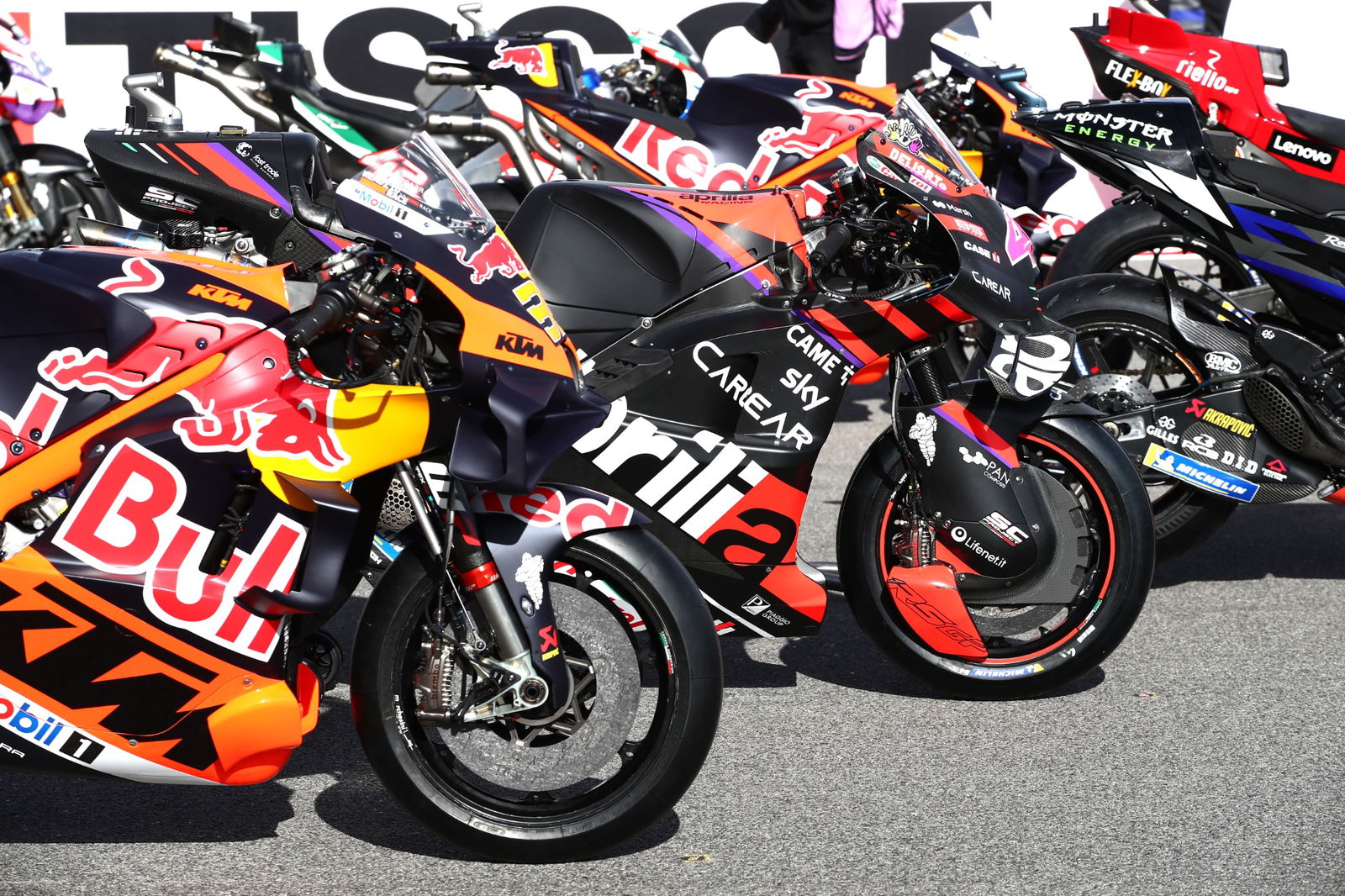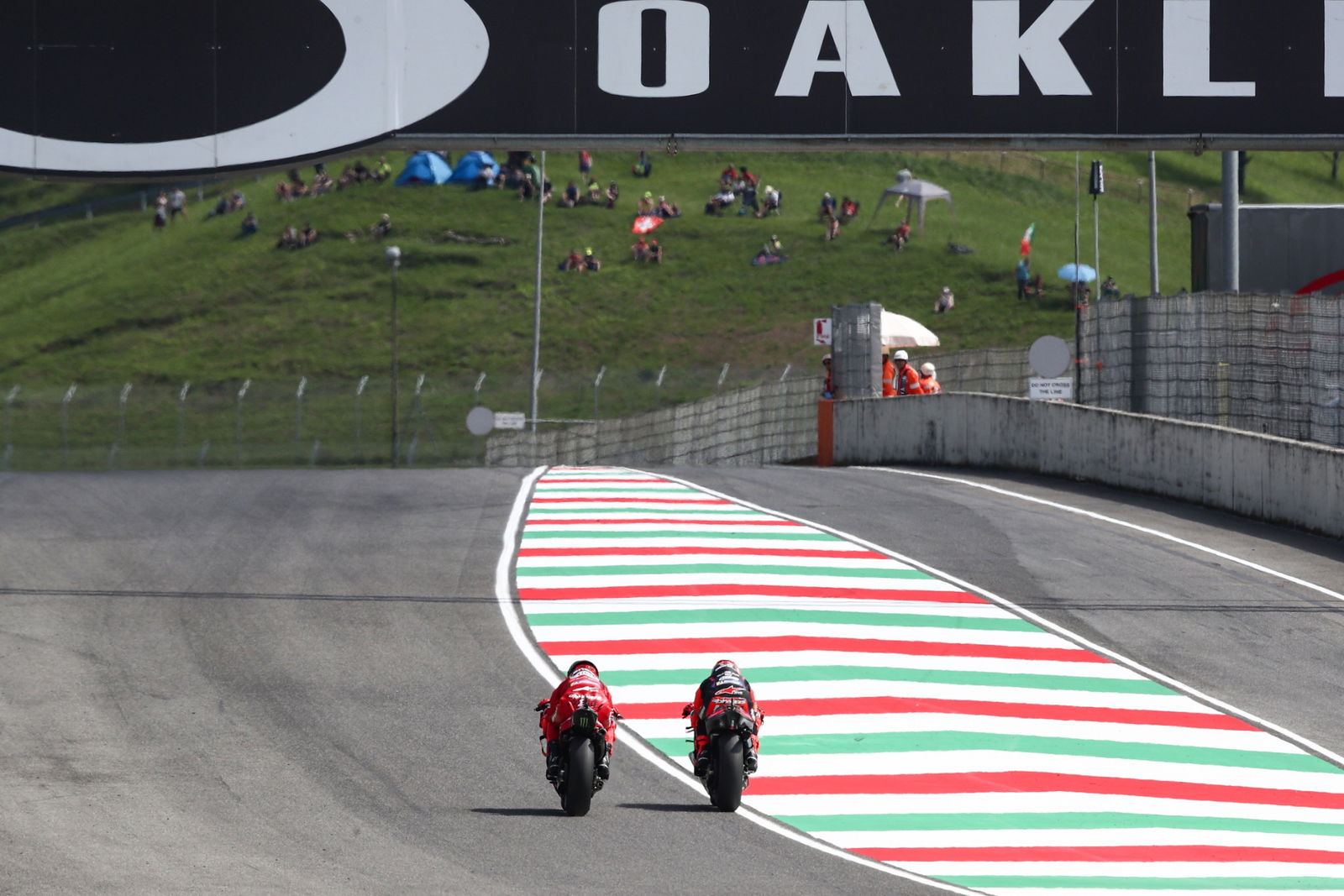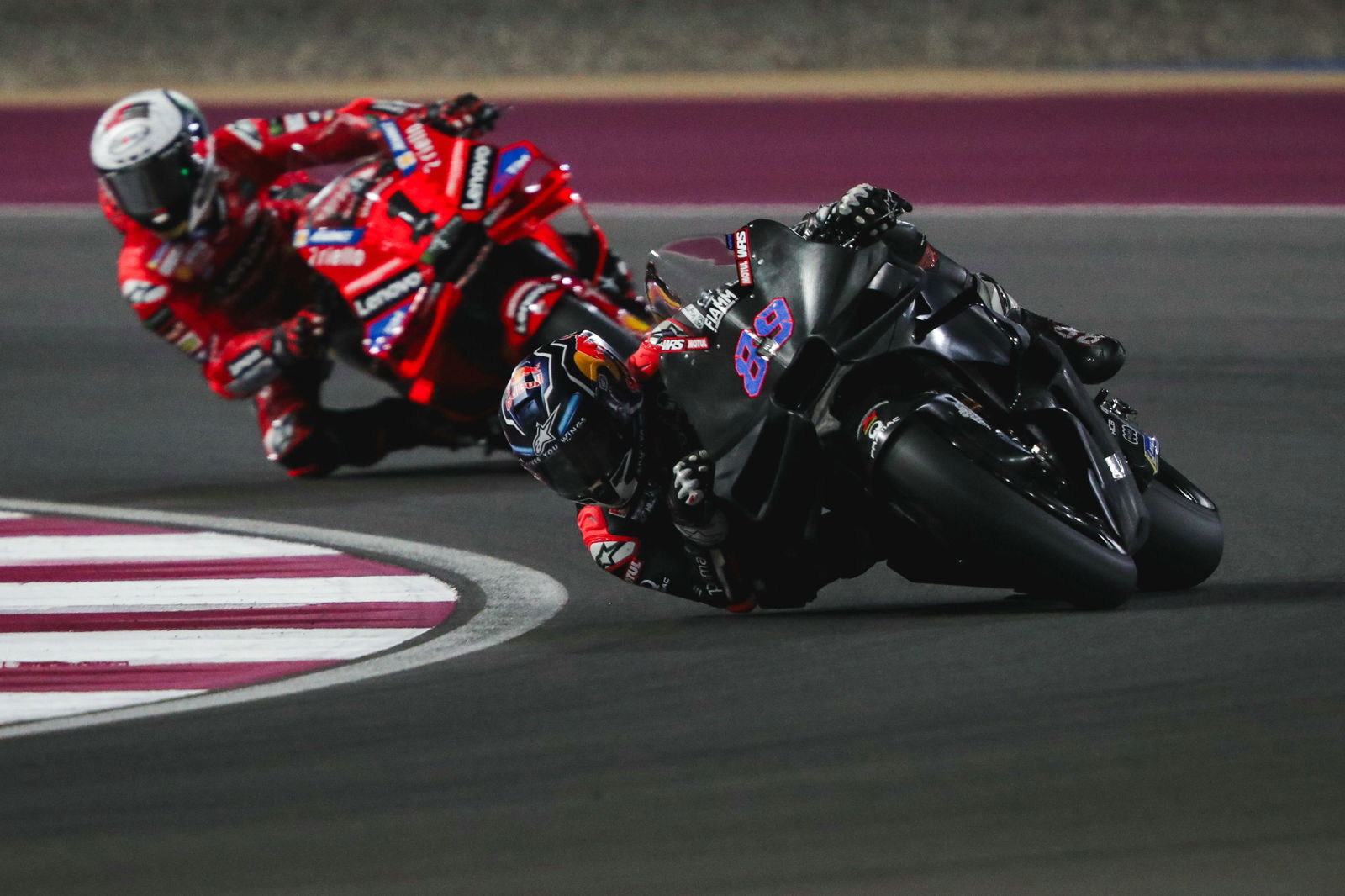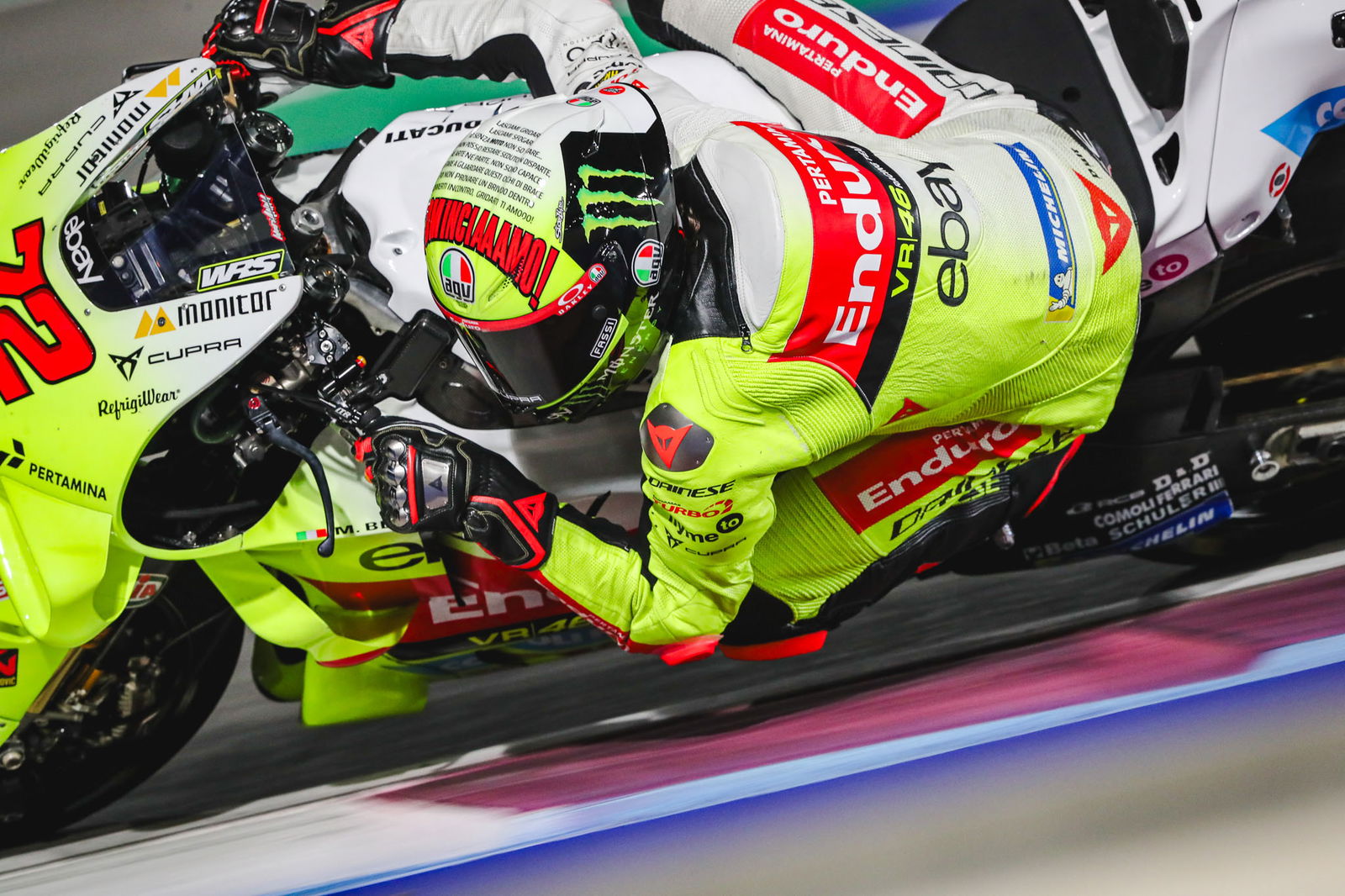Why MotoGP’s future 850cc era won’t repeat mistakes of the past
MotoGP Director of Technology Corrado Cecchinelli: “The key thing is we are looking at both a downsized and downbored [850cc] engine”

Valentino Rossi once labelled the previous 800cc era as “MotoGP's biggest mistake for 15 years”.
“The 800 is worse, simply worse, it is the same motorcycle with less power,” Rossi said in a 2009 interview with Dennis Noyes.
The then reigning champion also went on to blame a lack of “big battles and large slides” compared to the previous 990cc era on the rapid advance of electronics.
1,000cc engines duly returned in 2012 but with a specified maximum cylinder bore of 81mm (more on that later). Meanwhile, the rise of electronics was at least halted and equalised by the unified ECU in 2016.
But the new aerodynamic age started not long after, then the introduction of ride-height devices. Combined with ongoing development of bikes and tyres, lap times and top speeds are now persistently reaching all-time highs.
As such, although not yet official, MotoGP manufacturers say they have agreed to re-enter an 800cc era (850cc to be precise), alongside reduced aerodynamics and a ban on ride-height devices for the next set of technical regulations from 2027.
"Reducing engine performance was not our [initial] wish, but after discussing with our colleagues [manufacturers], we are also now in favour of reducing engine capacity just to make the bikes safe enough," said KTM's Pit Beirer.
It’ll be back to the future in some ways, with the main reason for cutting engine capacity to 800cc in 2007 also being to limit performance, especially top speeds, for safety reasons.
In that respect it (initially) worked, with the top speed at MotoGP’s fastest track, Mugello, instantly reducing from 334km/h in the final year of the 990s to 323km/h in 2007.
But, as Rossi highlighted, the price in terms of the racing spectacle was high.
While 990s were famous for close racing and satellite winners able to beat the factory stars, there was not a single satellite rider victory during the five years of 800cc.
It also took two and a half seasons for an 800cc race to be won by a last-lap pass, when Rossi famously dived under team-mate Jorge Lorenzo in Barcelona.
That remains one of MotoGP’s most memorable victories but it was very much the exception. Most 800cc races were decided well before the chequered flag, including the legendary Rossi-Stoner tussle at Laguna Seca 2008.

Ducati stunned its Japanese rivals at the start of the 800cc era in 2007, perfectly interpreting the new rules by going all-out for maximum horsepower with a high-revving screamer engine.
Ducati dominated the top speed charts at the Qatar opener with the next best bike, the Honda of Dani Pedrosa, some 7km/h slower. The fastest Yamaha was 15km/h slower!
Advanced electronics were used to overcome the strict fuel limits and help tame the peaky Desmosedici power delivery, while Bridgestone tyres and - most importantly - the wrist of a certain Casey Stoner did the rest.
Stoner claimed his and Ducati's first MotoGP title with ten wins (team-mate Loris Capirossi supplied one other victory) while the likes of Honda and Yamaha scrambled to find horsepower, adopting F1-style pneumatic valves in the process.
The leading Japanese brands eventually bridged the performance gap but the extreme tuning and electronic sophistication heavily favoured factory teams, while producing spaced-out racing.
Riders complained they could no longer make a difference - “the bike’s limits are your limits” - while the high costs of developing and maintaining such prototypes, following the financial crisis, contributed to Kawasaki (end of 2008) and Suzuki (end of 2011) leaving the sport.
No surprise then, that eyebrows have been raised at MotoGP’s likely 850cc future.
Fortunately for MotoGP, its Director of Technology, Corrado Cecchinelli, understands the implications of such a capacity change better than just about anyone.
That's because the Italian was one of the architects of Ducati’s early success during the 800cc era, having worked as Technical Director and then Vice Director General at Ducati Corse until he joined Dorna in 2010.
This is why Cecchinelli believes MotoGP will have nothing to fear from a future reduction in engine capacity…

'The key thing is a downsized and downbored [850cc] engine'
Crash.net:
People hear 850cc and they think of the previous 800cc era. Not great racing and highly tuned engines etc. Why would you be confident those problems won’t return?
Corrado Cecchinelli:
“First of all, because now I'm here! [Laughs]. Jokes apart, this is a lesson learned.
“At the moment, we have a maximum capacity [1,000cc] together with a maximum bore [81mm], which gives a result.
“If you just ‘downsize’ the engine in the way people understand it, which is reduce the capacity, you may end up with the same power output [by raising the revs] but a ‘worse’ engine, meaning it’s difficult to ride and less reliable.
“So what we are doing is considering downsizing and downboring at the same time. So that the [850cc] engine will not only lose power, but it will become the same or even more reliable and be [just] as easy to ride [as the 1,000cc], hopefully.
“The proof of this is that, at the same time, we are also considering reducing the number of engine changes per year. So we are confident that with the new [850cc] parameters the engine won't be weaker, but will be stronger in terms of reliability.”
Crash.net:
Because the maximum bore size controls how highly it can rev?
Corrado Cecchinelli:
“The parameter that matters is the mean piston speed. Which is basically some constant numbers x stroke x RPM.
“If we downsize and downbore, the stroke will probably be close to the same [as now]. That means revs will be close to the same. [But] power will be less because the piston surface will be less with a smaller [850cc] capacity.
“The key thing is we are looking at both a downsized and downbored engine.
“Then, depending on the final agreement, it may be downbored in proportion, or more than proportional, to the [bore/stroke] ratio we currently have with the 1,000cc rules.”

'We want at least the same reliability and rideability'
Crash.net:
And that should retain the rideability and things like that?
Corrado Cecchinelli:
“Yes.
“We don’t only want a power reduction, we want at least the same reliability and rideability; plus we are looking at more efficient engines which would be more relevant and sustainable.”
Crash.net:
New fuel limits?
Corrado Cecchinelli:
“We are considering a combination of the new [100%] non-fossil fuel and in a smaller amount. If it’s possible.
“Better sustainability is already achieved by the fuel composition itself. But if you also use less of it, that would be even better.
“Consider that we are in a very steep period of fuel evolution, so it's difficult to say now exactly how the 2027 fuel will perform.
“But if you consider the non-fossil fuels now, normally they have less energy. So if you reduce the quantity of that fuel as well, it’s like a double reduction.
“I cannot speak about ‘27, but I think it will be hard to match the present energy density with 100% non-fossil.
“Now, two or three tracks are affected by the current fuel limit. Maybe in future, it will be five or six.”
Crash.net:
But the main aim is to cut the top speeds?
Corrado Cecchinelli:
“The main object of everything is safety. And the secondary effects are cost reduction, the show and road relevance, which for me goes together with sustainability.
“These are all side effects that we want to achieve together with safety. And safety is basically reducing the performance.”

'We hope they will be slower in the corners because of less aerodynamics'
Crash.net:
Riders mainly fall off in the corners, is there a danger that they will be even quicker in the corners with smaller engines?
Corrado Cecchinelli:
“We hope they will be slower in corners because of less aerodynamics. And possibly safer because of what maybe we are [also] doing on the [ECU] software."
Crash.net:
The aerodynamics will just be shrinking, or will some things be banned entirely?
Corrado Cecchinelli:
“We are further away [from an agreement] on aerodynamics than for engines, so it's difficult to say.
"But our basic proposal, which is not approved so far, is more or less the same concept but with reduced dimensions, yes.”

'It’s a matter of reducing the aerodynamic effect'
Crash.net:
It’s impossible to get rid of all the aero…
Corrado Cecchinelli:
“I sometimes read ‘they should get rid of aerodynamics’. But this means nothing, because when something is moving fast in air, this is an aerodynamic body. So you can’t say 'no aerodynamics'.
“So this is a nonsense. But second, honestly, this would not be our intention even if it was magically possible in principle. Because we feel it’s an area that is fascinating, it’s a technical challenge, it has some crossover with production. Plus, it is an important marketing tool for us as a sport and for the sportbikes on the road.
“So there are a number of reasons why we would not like to go completely back in time, even if it were possible. But what could you say in a regulation anyway [to try to ban aerodynamics]? We tried and didn't succeed in banning aerodynamics in the past. Now we realise it's a pointless battle.
“Instead, it’s a matter of reducing their effect. Because their effect is dangerous to some extent.
“Some will say that the bikes are safer because they have a higher physics limit with aerodynamics. The truth is that if you take a bike, increase the physics limit and go at the same speed as before, then it is safer. But if you go faster than before, you will end up crashing at a higher speed.
“Going too deeply into aerodynamics also has a number of dangerous side effects. Like making the bike difficult to predict when you are in a slipstream. Putting the front tyre under an excessive load. Making it very hard to steer in a panic manoeuvre.
“So there needs to be a compromise, but we are not for banning, whatever this may mean. We are for correct limits in terms of the performance and the cost of evolution.”


